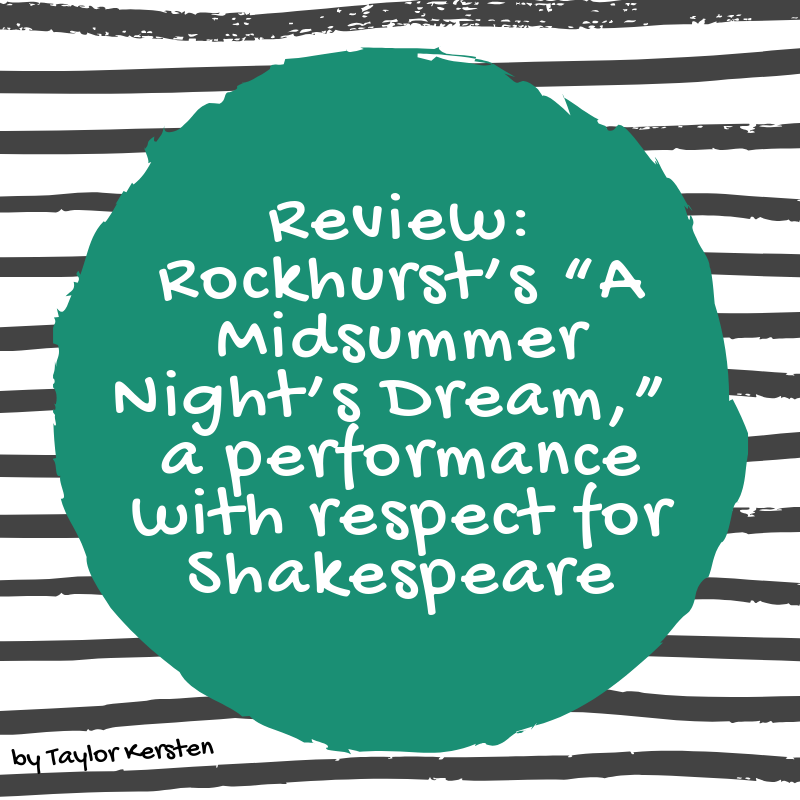Review: Rockhurst’s “A Midsummer Night’s Dream,” a performance with respect for Shakespeare
Rockhurst put on a production of Shakespeare’s “A Midsummer Night’s Dream” from April 12-14 in the on-campus Mabee Theater. The show is about a love triangle that is influenced by trickery from fairies in a forest. But the story is a Shakespearian comedy, so it closes with a happy ending.
The Rockhurst theatre, especially the show’s strong actresses and actors, did a wonderful job with the production.
However, even with the strongest production, there is always room for improvement.
The stage opened with a very small set, only a few platforms on the stage and a ramp for the actors that went into the audience. A screen projected the scenery and added different aspects to the scene behind the players, making up for the lack of a large set and allowing the performers more room on the actual stage.
When the show began, fairies of the forest danced around the stage, setting the tone of the production as playful and lighthearted. Puck (Mary Kate Halfmann), one of the fairies, swung her arms in sync with the screen behind her, making it look like she was controlling the projected smoke that revealed the first scene.
The lead characters: Lysander (Jon Boyle), Helena (Lily Buehler), Oberon (Rob Mitchell), Titania (Maud Joannet) and Bottom (Paul Hathaway) were cast perfectly.
All cast members embodied their roles: the graceful and regal queen, the booming and commanding king, and the hilariously irritating Bottom.
Each actor had confidence on stage and well understood Shakespeare’s rhythm. Every beat and line in place and seemingly rolling naturally off the tongue of each performer– no easy feat for a Shakespearian performance.
However, there was one element of execution with the actors that disrupted the flow of the play: some of the jokes lingered longer than necessary. There were comical scenes that the players perfectly produced but, every now and then, the intense focus on them interfered with Shakespeare’s balance of performance.
It is true that Shakespearean plays should not be performed in urgency, but they should adhere to a strict flow, meaning a joke or emotion should hit and then the show should keep moving.
The technical crew did well with this adaptation. Each cue was precise and most elements ran smoothly. However, there were some technical factors that could have been better executed.
While there was good use of the screen in some scenes, it became a distraction in others due to the constant movement of images on the screen during important monologues. The lighting worked was well for the stage, but when actors moved to the ramp, their faces were in shadows so the audience could not clearly see their eyes or expressions.
All in all, it was an ideal performance with a respectable amount of talent on and around the stage.
The cast and crew ranged from Rockhurst freshmen to juniors, and it was clear to the audience that the performance was something thespians are passionate about, and deeply love.
Taylor is an experienced thespian who has worked in Rockhurst’s productions of Ilyria, Our Country’s Good, and Waiting for Godot as assistant stage manager and stage manager, and as an actor in Life is a Dream. She has also worked on performances of Beauty and the Beast, Wizard of Oz, Phantom of the Opera, Shrek the Musical, and My Son Pinocchio as Stage and Technical Manager. Taylor has also participated in Chitty Chitty Bang Bang, and Joseph and the Amazing Technicolor Dream Coat as first chair trumpet in pit orchestra.







